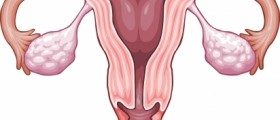
Salpingo-oophorectomy is one of the main components in the purposeful reduction of the risk of development of gynecologic cancer and breast cancer in female patients who suffer from mutations in the genes known as BRCA1 and BRCA2. There are at least 17 to 39 percent of BRCA mutation carriers who have a mutation in the BRCA2 gene. No studies have evaluated the efficacy of the risk reducing salpingo-oophorectomy for the prevention of primary peritoneal cancer, fallopian tube cancer, ovarian cancer or breast cancer. This is mainly due to the fact that the mutation carriers of the two aforementioned genes are quite different from one another.
Methods
One of the most ambitious studies which dealt with such medical problems and issues took 10 years to be fully conducted. The study included participation of 1,079 women. There were certain rules and expectations regarding the aforementioned participants. All those women had to have documented evidence of deleterious mutations in the BRCA1 and BRCA2 genes. It was also of utmost importance that they had at least one ovary in situ during the period in which the genetic testing took place. One other important condition was that all those women should not have had any personal history of gynecologic cancer associated with the BRCA genes prior to the genetic testing. The study could have only included women who were older than 30 at the time of the genetic testing, mostly due to the fact that most different types of ovarian cancer risk reduction strategies are not really the most recommended medical interventions for women younger than 30. It may also be important to note that women who had some breast cancer history which was not involved with other distant metastatic diseases were also allowed to enroll. Those who had bilateral salpingo oophorectomy were included in the risk reducing salpino-oophorectomy group. The surveillance group involved all those women who refused to undergo the risk reducing salpino-oophorectomy process. They were advised to undergo a screening combination of serum CA-125, transvaginal ultrasound with other means of ovarian cancer screening. These two distinct groups were involved with different calculations of the follow-up, as well.
In all different types of analyses performed during the study, breast cancer was clearly defined as an invasive type of cancer, regardless any of its hystologic subtype or perhaps ductal carcinoma in situ. Different types of gynecologic cancer were treated much more differently and the definition was also more versatile. The cancer was defined as invasive epithelial carcinoma which could have affected the peritoneum, the fallopian tubes or the ovaries. Certain other types of cancer such as tumors of the cervix, tumors of the uterine corpus, non-eepithelial ovarian tumors, ovarian tumors of low malignant potential and lobular carcinoma in situ were not actually included as significant events in the final analysis. The evaluation of breast cancer end points did not include any patients who underwent a risk reducing mastectomy but still suffered from bilateral breast cancer. The only similar type of cancer which was considered to be associated with a significant risk was a contralateral breast cancer, confirmed in some patients. There were also certain participants in the study who needed to be excluded from the analysis so that the biases could be limited properly. Those patients carried BRCA1 or BRCA2 mutations and suffered from unsuspected occult type of gynecologic cancer. A small number of participants diagnosed either with certain types of gynecologic cancer or breast cancer within 6 months of the initiation of the genetic testing also needed to be excluded from the analysis. Patients from certain other small scale studies were included in the evaluation and the analysis of the cancer end points as well. Some of them were only included in the analysis of the impact that risk reducing salpino-oophorectomy has on the subsequent types of breast cancer. Out of all the participants in the rather large scale study there were 597 of them who were followed up for a mean of 35 months for breast cancer events and also another 792 participants who were followed up for a mean of 39 months for different types of gynecologic cancer events.
Results
According to the final results there were 498 carriers of the mutations in the BRCA1 gene and they were assessable for gynecologic cancer end points. Out of all those there were 325 of them or 65 percent of them who underwent risk reducing salpino-oophorectomy a median of 5.5 months after receiving the results of the genetic tests. There were also 294 carriers of the mutations in the BRCA2 gene and they were too assessable for gynecologic cancer end points. Out of all those there were 184 of them or 63 percent of them who underwent risk reducing salpino oophorectomy a median of 4.1 months after they received the results of the genetic tests.

















Your thoughts on this
Loading...